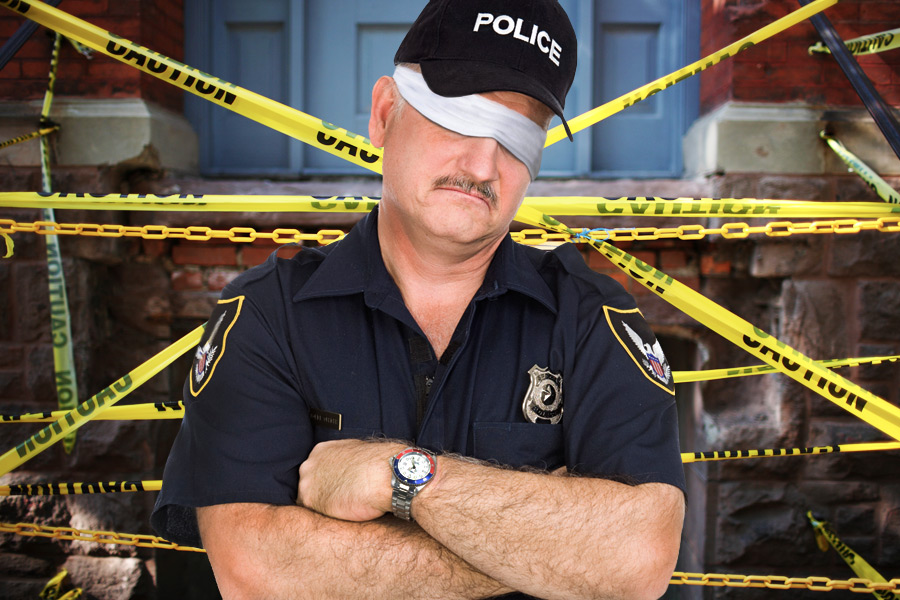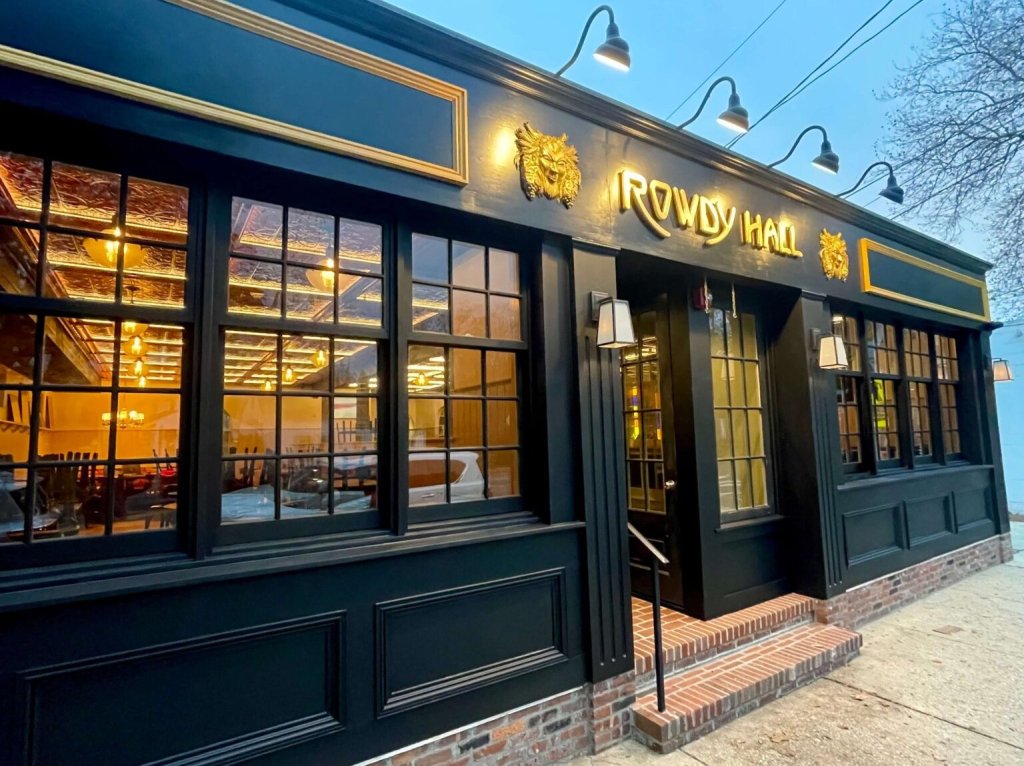Protests Bring Change: Police Must Take Down the Blue Wall

Demonstrations have continued around the country for weeks concerning the deaths of two black men at the hands of police officers and the failure of either of the officers involved to be indicted. It is fair to ask, at this point, what is it that those demonstrating want? That the police be friendlier to the general public? That police stop profiling African-American men? That they stop getting violent with people over petty crime? The vast majority of our police officers do their jobs remarkably well under difficult circumstances. But I think there is a larger point.
Something needs to be done about the Blue Wall of Silence. Wikipedia defines this as “the unwritten rule that exists among police officers not to report on a colleague’s errors, misconducts or crimes….If questioned about an incident of misconduct involving another officer, the officer being questioned would claim ignorance of another officer’s wrongdoing.”
Look again, this time closely, at the case of Eric Garner, a large African-American man weighing about 350 pounds, who was wrestled to the ground on Staten Island and died. Afterward, the police said that officer Daniel Pantaleo applied what they said was a legal “grappling hold” and not an illegal “choke hold” that could kill. But many who viewed the videos made by private citizens at the scene saw it as a classic choke hold. Whether it was unintentional or not was not the point. And then the later failure to indict—which seems to have been engineered largely by a prosecution well known and friendly to the police department—prevented the issue from even being considered for further judgment, appearing to confirm the rules of the Blue Wall. That is what these protests are all about. Yes, it is about black versus white. Yes, it is about reactions to petty crime. But the larger issue is the police failing to acknowledge a wrongdoing.
Here’s another case with some similarities to the Garner case. And it happened in Southampton.
On February 4, 2004, a 35-year-old man named David Glowczenski, who suffered from schizophrenia, became agitated at his home on Layton Avenue where he lived with his mother. As she had done on other occasions, it was reported, she called the police for help. While waiting, Glowczenski took out a Bible, his sister said, told his mother he would be going to church to pray, went out of the house and walked down Layton Avenue to North Main Street where, in front of the Our Lady of the Hamptons School, by the railroad station, several police cars arrived one at a time and four police officers got out, found him screaming, yelling and behaving wildly. They attempted to calm him down. He failed to calm down. Officers then attempted to subdue him, during which time a female police officer fell to the ground. Eventually, the complaint stated, after being shocked with a Taser and pepper sprayed, he was subdued, on his stomach with his hands cuffed behind his back, zip ties on his ankles, lying on the ground. At this point, paramedics were called, and when they arrived they found Glowczenski in cardiac arrest, not breathing. He was transported to Southampton Hospital, where he was pronounced dead at 11:20 a.m.
What happened? The Suffolk County Police Department—they are empowered to investigate other police forces—conducted an investigation of this incident and found that appropriate force had been used to subdue a man who was thrashing out of control. An autopsy, prepared by the Suffolk County Deputy Medical Examiner James Wilson, M.D., said that Glowczenski did receive blunt force injuries, but that death was caused by “acute exhaustive mania due to schizophrenia.” Wilson’s boss, Suffolk County Chief Medical Officer Dr. Charles Wetli, soon thereafter told the press—this had become a sensation at the time—that the cause of death was “excited delirium.” When it was questioned, he said he had used it in other cases his office examined for police departments, and said he had first heard the phrase used by a psychiatrist. He said he intended to continue to write and lecture about it.
Seven months later, on September 20, 2004, the family of David Glowczenski filed a civil lawsuit against the Village of Southampton, its police department, Suffolk County, various police officers, EMTs, medical examiners and others—which also included Taser International of Scottsdale, Arizona—claiming unnecessary excessive force killed their son.
Their lawsuit contained photographs of Glowczenski’s injuries from being beaten around the face, and it also contained the results of a second autopsy they had requested, this one performed by Lone Thanning, M.D., the Rockland County Medical Examiner. Her report noted that there was “extensive evidence of excess application of force,” and that the cause of death was due to a combination of the blunt force injuries, injuries to his ribs, face and testicles, repeated exposure to pepper spray, a total of as many as nine Taser shots (Tasers can leave stun marks), being handcuffed, then having his ankles shackled while a large man (Officer Schucht, 270 pounds) kneeled on his back.
It took nine years for this lawsuit to go to a judge’s decision. This is an extraordinary amount of time for such a thing to get to a courtroom, a tribute to legal delaying tactics. On March 5, 2013, Judge William D. Wall, of the U.S. District Court of the Eastern District, after disallowing the testimony of a supposed Taser injury expert hired by the Glowczenski family, dismissed the civil lawsuit, stating in sum that “there is no expert evidence that anything that (officer) Platt did or did not do caused Mr. Glowczenski’s death.”
There were no smartphones in general use to make videos of such takedowns in 2004.
I do not intend to suggest here that this decision was in any way inaccurate or that the police in this instance did anything wrong. But I do think the difference between the initial report of this incident and the later report presented by the Glowczenski family is glaring.
The police have an extremely difficult job to do. Every year, nationwide, some of them get killed trying to do it. Nevertheless, I think that in our society, as in any society, there are people who like to assault others, and the way things are now, a good place for them to enjoy such behavior is in a police department where the Blue Wall of “don’t ask and don’t” tell currently reigns.
There needs to be a way to have a credible, independent group to see to the protection of the general public when it comes to cases where police use inappropriate force to citizens who resist arrest. Even in professional prize fighting, where people are paid to beat one another up, there is an independent referee who steps in to stop things if they get out of hand, not a referee who is closely allied with one of the participants.
There may be other reasons to have a Blue Wall, but I think that surveillance cameras and smartphone videos that can show inappropriate physical behavior also can provide a baseline that can reveal future inappropriate follow up.
Putting video cameras on police officers will go further in shining a light on what the police do—and the police themselves will be more careful—but if it continues to be known that there will be no serious consequences for inappropriate behavior by police officers, inside the precinct or out, it will lead nowhere. Only more protests and bad feelings by the public will ensue.
I am not familiar enough with the workings of the police and justice departments to suggest how this change could come about, but making it would be a successful outcome and lead to a triumphant end to the protesting, in the same way that Civil Rights legislation ended protesting for it in the 1970s. This situation should be, in my opinion, something that our political leaders discuss and ultimately legislate on.
And the sooner the better.



